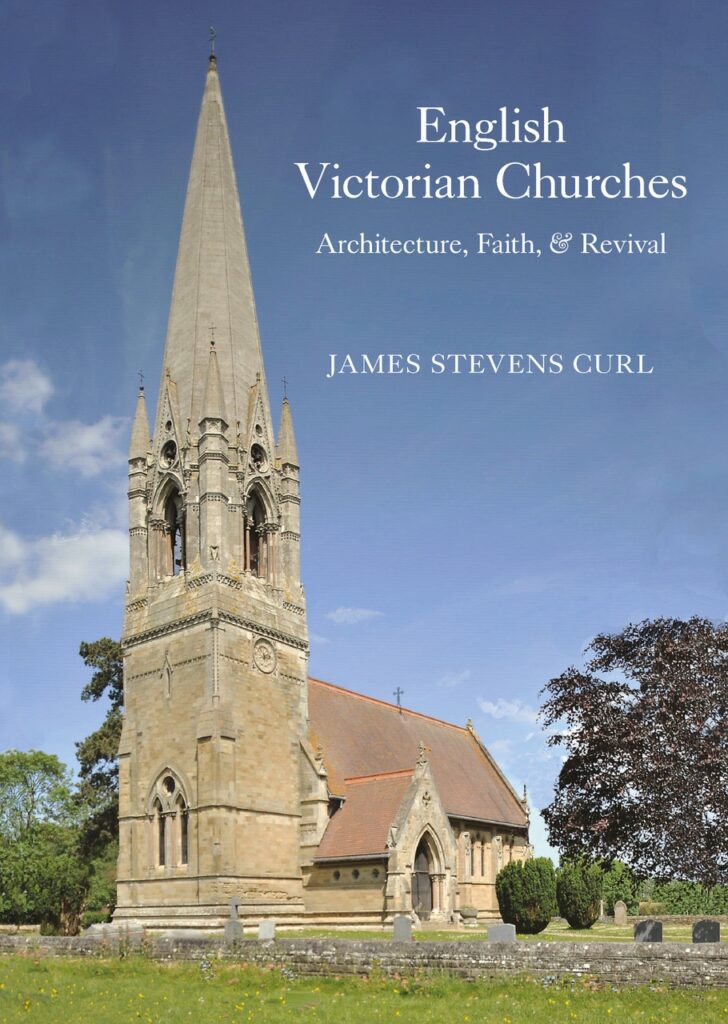A spirited take on architecture the author finds unfairly maligned and endangered: “this book has an elegiac quality, for not a few of my chosen works face an uncertain future.”
More than six decades have passed since my earliest observations on under-appreciated Victorian architecture were published: since then, problems of neglect, inner-city decay, vandalism (official and unofficial), and the march of time have further eroded a rich 19th-century legacy. Yet we could learn much from the Victorians concerning architecture that often rose to its occasion: and of all Victorian building-types, none is as fascinating as that designed for Christian worship. Into their churches Victorians poured creative genius, and the finest exemplars stand comparison with the best mediæval work, often surpassing it in quality.
As we move into the third decade of the twenty-first century, it becomes more difficult to explore churches. Often the finest works of architecture in an area, they are terra incognita to a largely uninterested population: there are even indications that any building that can be considered as real architecture will be an object of loathing for the visually desensitised, while anything connected with the Middle Ages, especially ‘Gothic’, is dismissed as ‘irrelevant’. All this has brought responses from the Churches: ‘redundant plant’ is a label ecclesiastical authorities apply to buildings of which they wish to be rid, while increasing numbers of abandoned buildings fall to vandalism or demolition. Many Victorian churches in inner cities or towns have been destroyed, or are under threat, yet most are not mere copies of mediæval styles (ignorantly termed ‘pastiches’ by Modernists): indeed they are often marvellously original; not a few display craftsmanship second to none; and several are among the first architectural ranks of any period. Another problem is that 21st-century English society is largely secular: few people understand churches, feel easy in them, or know how they once were used.
Old churches were tombs of dead generations (often commemorated on mural tablets or funerary monuments, but today even those are under threat), and churchyards were packed with bones of parishioners interred over the centuries, so communities were physically and spiritually connected with their history, collective memories, and antecedents. The mellifluous texts of the Prayer-Book were familiar, laying foundations of feelings for the English tongue and the seemly dignity of ceremonial and worship. Our language owes much to the King James Bible, yet few now read it: the disappearance of elementary Christian knowledge has eroded aspects of English identity, and there can be no doubting resultant linguistic impoverishment. Mystery and numinousness have been discarded in favour of fatuous virtue-signalling, absurd attempts to introduce a language akin to street-argot in order to ‘reach out’ (clearly it does no such thing), and tenth-rate ‘music’ that lowers rather than elevates the spirits. When many are seeking spirituality, the Church appears unable to provide it: some senior clergy have even attempted to curry favour with mobs by concurring with demands for iconoclasm, notably concerning the removal or destruction of funerary monuments commemorating historical figures currently out of fashion.
Why write a book on Victorian religious buildings in 2022, and how does it fit a climate that is inimical to history (especially to England’s history), favouring a tabula rasa owing nothing to the past? My objectives include a desire to show how rich is England’s nineteenth-century church architecture; to describe its various styles; and to give a flavour of the backgrounds that prompted its designs and realisations. Some ecclesiastical buildings are wonderful repositories of the very best exemplars produced by craftsmen of genius; others are quirky, not necessarily things of beauty; and others are included for different reasons, but always in order to make a point. Yet I am aware that in some respects this book has an elegiac quality, for not a few of my chosen works face an uncertain future.
This guest post was written by Professor Emeritus James Stevens Curl, author of many scholarly books on the history of architecture and style, sometime Visiting Fellow at Peterhouse University of Cambridge, and Member of the Royal Irish Academy.

by James Stevens Curl
9781739822934, Hardcover, £32.50 / $48.75




 Q&A with Seth Peabody: Exploring German Film History
Q&A with Seth Peabody: Exploring German Film History